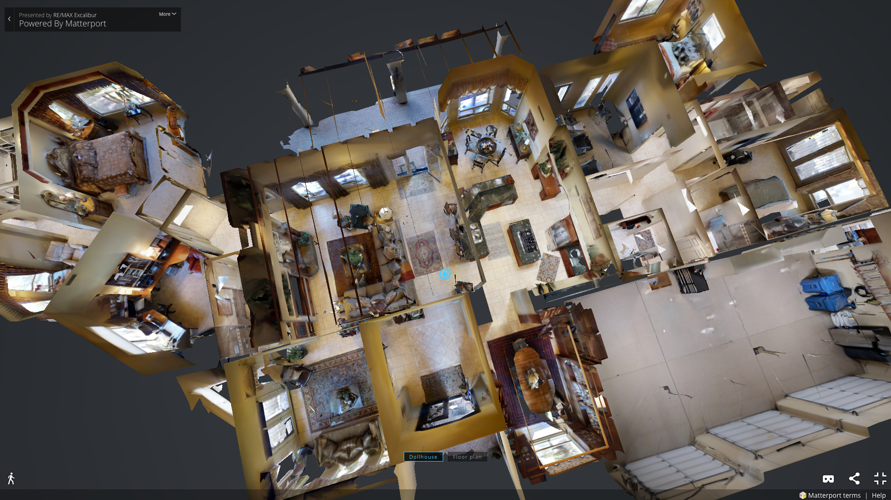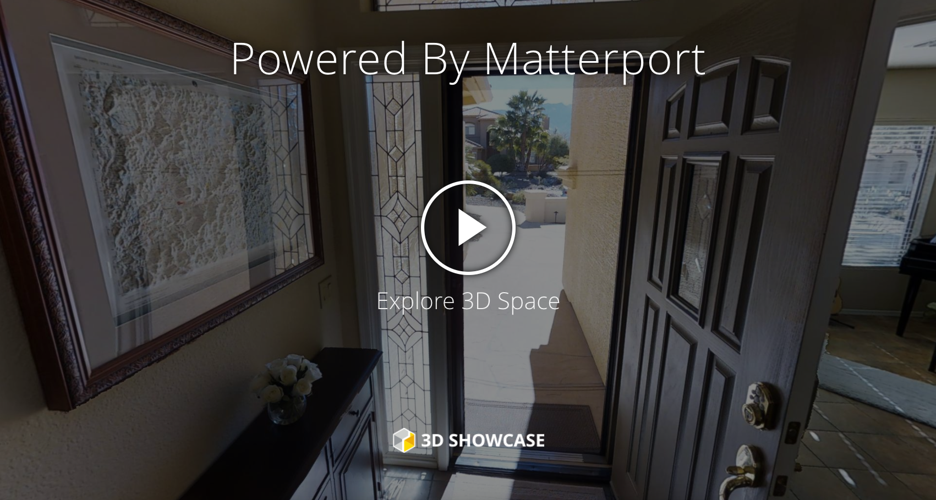Tucson-area homebuyers are purchasing properties without physically stepping foot in them using a new technology that some are calling a game-changer in the real estate market.
RE/Max Excalibur real estate agency in Tucson partners with Matterport, an immersive media technology company, to create three-dimensional and virtual-reality experiences, allowing buyers to navigate real properties on their mobile devices or desktops as if they were walking through them in person.
Lisa Larkin, managing partner and agent with RE/Max Excalibur, says 3-D home tours benefit all parties involved and may accelerate the homebuying process, creating a sense of urgency for buyers to place offers.
“For the seller, it allows them to present the property in a much more complete fashion, thereby eliminating any unnecessary showings,” she said. “It can also create a sense of urgency when somebody sees something and they can (virtually) walk through it, thinking, ‘I better hurry up before someone gets it.’”
Long Realty, with more than 950 agents across the Tucson area, however, does not plan on using this technology in the near future, said Long Co. CEO Rosey Koberlein.
“We don’t think (the technology) is perfected and the price point doesn’t make it reasonable,” Koberlein said.
Agencies are hiring photographers to use the specialized cameras sold by Matterport, to scan room dimensions and take 4K quality photographs to create the 3-D experience. However, many agents are purchasing cameras themselves and shooting photographs. The latest edition, the Matterport Pro2 Camera, costs about $3,995.
Gabriel Chavez bought the 9-lensed camera himself and takes 3-D photos of homes for RE/Max Excalibur.
“I just knew that technology is what’s going to revolutionize the whole industry of real estate,” he said.
Chavez said the process includes two parts: The first includes placing the 3-D camera on a tripod and allowing it to scan each room. He said the camera is relatively simple to use and the process isn’t time-consuming, but can be depending on the size of the property and the wants of home sellers or agents.
The second step includes sending the collected data back to Matterport to render the finished project to present it to the agent, providing links to use on the website and application access. Matterport can usually provide the finished project on the same day the data is recorded.
Larkin said RE/Max Excalibur agents initially had to pay about $250 to create 3-D home tours. Now, the price has dropped and may cost between $150 to $250 for each home, depending on square footage, and the “bundle” an agent selects, which may include drone photos and still photographs accompanying the 3-D tour.
Long CEO Koberlein says she sees technology becoming more prevalent in real estate as people desire higher-quality images to view prospective homes.
But one of the most difficult issues to tackle is figuring out how to properly apply the technology, according to Koberlein.
“You have to figure out the appropriate delivery system for the property at the appropriate price point,” she said. “It could be appropriate for your higher listings or for an unusual piece of property, like a ranch — something that could be difficult to photograph.”
At RE/Max Excalibur, the technology is used for both luxury homes and everyday listings.
“It started out with luxury, but we see it has so much more value than just luxury,” said Larkin.
3-D home tours are used for out-of-town buyers frequently in the Tucson area, according to Tom Krieger of the Tom Krieger Group with RE/Max Excalibur. He says about 85 percent of his buyers in the SaddleBrooke and SaddleBrooke Ranch areas come from out of state and can recall about five buyers in particular who placed offers before physically stepping foot on the properties.
Krieger sent a 3-D home tour link to a couple from Minneapolis looking for a home in SaddleBrooke Ranch and after a virtual walk through the house, they felt comfortable making an offer. The listing price for the home was about $461,000 and the couple closed on the home for $460,000.
“When (the husband) got there he goes, ‘This house is better than it looked based on the information you sent us,’ ” said Krieger.
Krieger also recalls a client from Wisconsin who was looking to buy a home in an active-adult community for those 55 and older. He said the 3-D walk-through allowed his client to get a feel for the location in a way a photograph could not sufficiently capture.
“The whole view changes as you’re walking,” Krieger said. “He really liked that aspect of it. The things he told me he liked would not have been experienced in a still shot.”
The asking price of the home was $384,000. That particular client placed an offer for about $377,900.
Potential buyers can view homes in 3-D free of charge at Tucson3DTours.com or at Realtor.com, which also has an iOS application to view homes in 3-D. The app also contains a “dollhouse” view of homes, which gives users an idea of room sizes throughout the home by looking from above.
Larkin says 3-D tours also help sellers save time by cutting down on routine cleaning for in-person tours and help buyers narrow their search early on.
It can also help buyers see properties they otherwise would not because of time constraints or because the property may be too difficult to reach.
Agents are sometimes requiring that buyers look through 3-D home tours before attending showings. Larkin said it’s a little extra step, but it is worth it to make sure that buyers are serious about the property.
David Karlik sold his Tucson vacation home on a golf course in Starr Pass after using 3-D home tour technology. He said his home was on the market for about a year, with no serious offers and he began to feel discouraged until the virtual tour facilitated the process.
“When Lisa came over, she told us she normally puts it on houses that are higher value than what we had,” Karlik said. “Nobody was putting in any offers, so she put down her own money and we went ahead with the 3-D tour.”
Larkin set up the 3-D home tour and after two weeks of it being online, the house was finally sold, according to Karlik. He sold another home in 2011 and said he wished the technology was around then to speed up the process and cut down on unnecessary showings.





